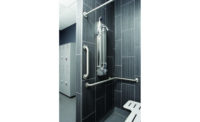The impact of COVID-19 is both far-reaching and deep. As a result, the building industry has been permanently changed. As building professionals across the country have stepped up in this new landscape, they, like many other industries, are finding it necessary to reimagine their workflow by expanding resources and capabilities with new technologies.
According to survey results from the International Code Council, while the majority of code departments surveyed (93%) were still performing inspections — either remotely or in-person — six in 10 respondents did not have the capability to remotely carry out critical aspects of their work. Since being declared an essential industry by the Department of Homeland Security, code officials and those in related fields have needed to quickly adapt to a “new normal” in order to fulfill responsibilities, such as ensuring that temporary structures like field hospitals are safe for use. Without additional resources from the government, the safety of code officials, inspectors and the general public are put at risk.
Additionally, the potential for a larger disruption in work, from unwell workers or stalled/delayed permitting and inspections, is a threat to the overall economy. However, this does not mean the industry has been sitting idle waiting on additional resources. Instead, building safety professionals have increased interdisciplinary collaboration to adapt and reinvent the industry through tips, best practices and key learnings.
Minimizing risk — new safety precautions
The landscape has changed drastically causing many in the building industry to enforce rules and guidelines that were unthought of six months ago. Along with stringently adhering to the guidelines for social distancing provided by the U.S. Centers for Disease Control and Prevention (CDC), various building safety departments have taken it a step further to mitigate against the possibility of an outbreak. This is critically important as there are still many functions and responsibilities from inspections to construction that require code professionals to be on the jobsite.
For code officials, it has become common practice for all workers to vacate an area while on-site inspection is taking place to minimize exposure. This has become necessary because even though virtual inspections are technically possible, the Code Council found that 61% of departments did not have the capabilities to perform this task. For construction practices, new methods include creating teams of workers that only interact with the same people on any number of projects. This way, if one person were to contract the virus, the number of people exposed would be minimized.
Prepping buildings for safe reoccupancy
As local and state governments are beginning a tiered reopening of their economies and businesses resume activities in office, one important but often overlooked safety precaution will be preparing a stagnant office building for occupancy. Without proper preparation and maintenance, the building can pose a danger to incoming occupants, whether from a stagnant HVAC or plumbing system to a powerless carbon monoxide detector.
Due to wide-range of aspects to consider when reopening an office, ICC has created an extensive list of tips and considerations to keep in mind before resuming normal activity. Tips cover topics such as reviewing building plans, fire and life safety considerations, restarting the plumbing and mechanical system and more. Priority considerations include:
- If a building’s water distribution system has been shut down or seen reduced flow, the pipe system must be flushed with clean, potable water to remove any possible bacteria;
- Address any temporary changes needed to building access and exit patterns to accommodate temporary reopening protocols such as employee health screenings, disposal of PP, or any areas specifically designated for decontamination; and
- Close common areas where personnel are likely to congregate and interact or enforce strict physical distancing protocols.
Designing for the future
Before the economy can truly restart and businesses begin to successfully reopen, employees and consumers must feel comfortable venturing out into the public again. Instilling this sense of safety and security begins with upgrading buildings with modernized building codes that address public health concerns and social distancing guidelines, including physical barriers between cashiers and customers and six feet of distance between colleagues in the office.
While some wish for a quick update that easily addresses these concerns, updating pre-existing building codes requires a thorough process to ensure the codes are safe and effective. In fact, the International Codes (I-Codes) developed by ICC are created using a rigorous process that draws upon the expertise of hundreds of plumbing, mechanical, building and safety experts.
Understanding the current urgency, ICC is gathering the brightest minds across the building industry for a taskforce whose focus will be on addressing COVID-19 concerns and creating tips and best practices for preparing a building for re-occupancy. The knowledge stemming from the taskforce will also be considered for the latest edition of the I-Codes.
Although no one can predict with certainty what will happen long-term, the building industry has been presented with a great opportunity to reinvent itself. Coming out of this pandemic, not only will our industry be stronger than ever, but we’ll also see a higher emphasis on safety and protocols. After all, safety starts before you ever get to the job site or the office.



